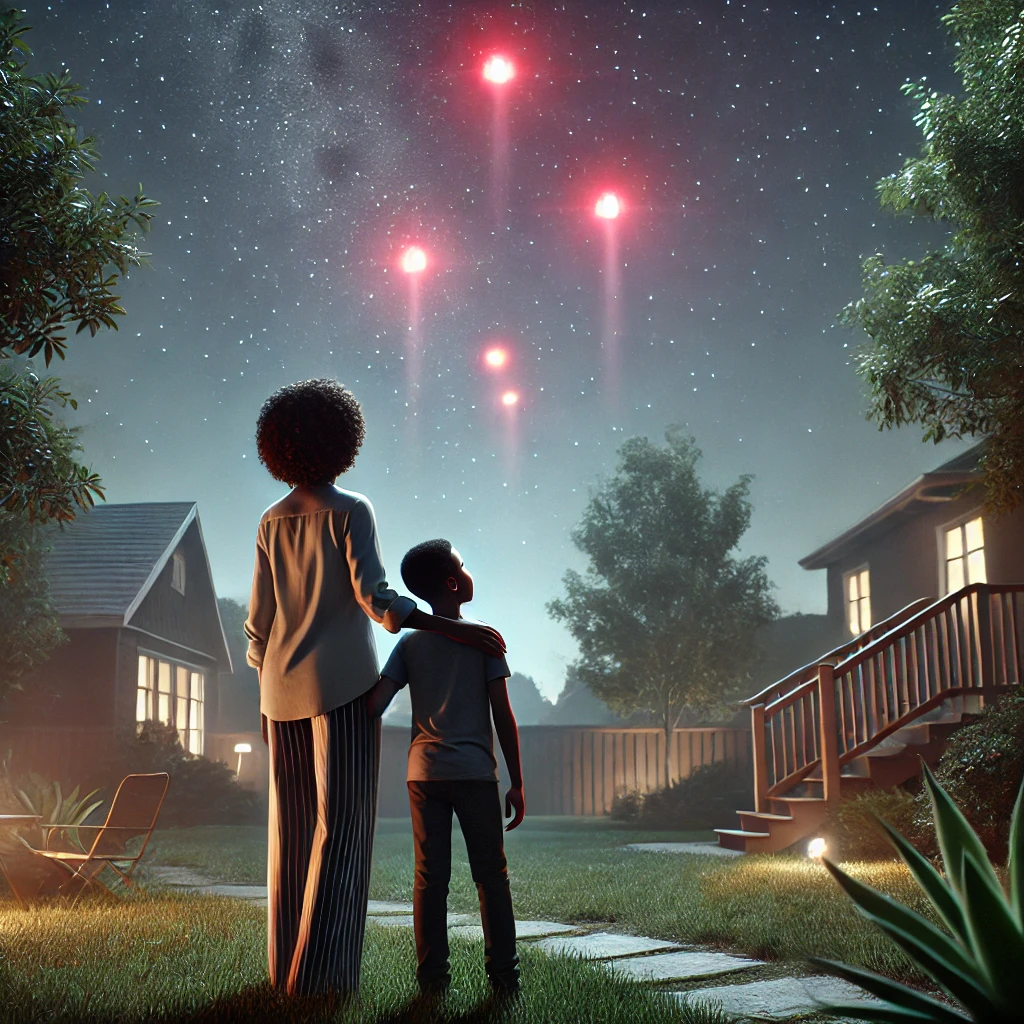Black People Do See UFOs

Patricia Avant’s documentary, Black People Do See UFOs, explores the often-overlooked relationship between the Black community and UAPs (Unidentified Aerial Phenomena). She highlights how historically, Black voices have been absent from these discussions, not necessarily due to a lack of sightings but perhaps a lack of representation in the discourse. Avant shares her personal journey, beginning with a life-changing encounter in 2016 when she and her son witnessed four glowing red orbs outside their home. This event spurred her into action, leading to a year of detailed observations and recordings of various UAPs, which she meticulously documented.
Through her work, Avant emphasizes the importance of acknowledging these phenomena while encouraging others to look up and remain observant. She refrains from making definitive claims about the nature of these objects, instead presenting her footage for viewers to interpret. Avant touches on the broader implications of UAPs, referencing the government’s increasing openness through terms like “disclosure” and the evolving language from UFOs to UAPs and anomalies. Her footage features various types of orbs, some behaving aggressively, others mimicking stars, and even one resembling imagery captured decades earlier by another researcher.
Her documentary serves as both a personal narrative and a broader call to action for the Black community to engage in these discussions, bringing a fresh perspective to the ongoing exploration of UAPs.
The Betty and Barney Hill Incident of 1961 stands out as one of the most famous UFO abduction cases, and notably, it prominently features Barney Hill, an African-American man, alongside his wife, Betty. This incident is not only significant in the broader history of UFO encounters but also serves as a rare example of a well-documented event involving a Black individual. The Hills reported being followed by a strange, silent craft while driving through rural New Hampshire. They described a harrowing encounter, including observing humanoid beings through the windows of the craft, followed by a period of missing time and fragmented memories.
Later, under hypnosis, both Betty and Barney recounted being taken aboard the craft and subjected to examinations by the beings. Their accounts were detailed and strikingly similar, despite being conducted separately. Barney’s perspective, as a Black man in the racially tense 1960s, added layers of complexity to the case, influencing both its reception and their personal experience of public scrutiny.
The Hill case continues to resonate in discussions of UFOs and alien abduction phenomena, serving as a reminder that encounters with the unknown cross all boundaries of race and culture. It challenges the misconception that Black people are absent from UFO narratives, affirming that they, too, have contributed to this facet of human experience.
The rarity of Black individuals appearing in UFO narratives raises intriguing questions. Do Black people experience fewer sightings, report them less often, or perhaps take less interest in observing the sky? These are questions that future research might explore. What is clear, however, is that the contributions of individuals like Patricia Avant and Barney Hill demonstrate the universality of these encounters, urging more effort to document and understand UAP phenomena across all communities.

